Comments / Questions (10)
![]() Fabiana wrote:
Fabiana wrote:
Buonasera, avrei due domande 1.c'è scritto di usare i ferri n 20 ma con la lana polaris non si usano i ferri 12? 2. Davanti destro+manica c'è scritto che quando il lavoro misura 44 46 48 cm, 13 11 9 nuove maglie. Cioè per la taglia xxxl bisogna aumentare 9 maglie? Grazie
10.11.2023 - 21:40DROPS Design answered:
Buonasera Fabiana, deve utilizzare il numero di ferri che le permette di ottenere il campione indicato. Per il numero di aumenti è corretto, per la taglia XXXL deve aumentare 9 maglie. Buon lavoro!
12.11.2023 - 12:03
![]() Pat Ellis wrote:
Pat Ellis wrote:
I'm sorry but the picture with this pattern was lovely. I got the yarn suggested and the needles. My gauge was okay. The end result is just sad. WAY too BIG!!!! HEAVY - ways a ton!!!!! Sleeves way too long..... Not really anything that anyone would want to wear. Sorry to have spent the time and the money!!!!
12.05.2020 - 02:17DROPS Design answered:
Dear Mrs Ellis, we are sorry to hear you had worries with this pattern, please show your work to your Store - even sending them a picture, they should be able to check if there is anything wrong. Happy knitting!
12.05.2020 - 09:54
![]() Pt Ellis wrote:
Pt Ellis wrote:
Knitting The Grove - a Drops pattern -using Polaris yarn. Collar instructions: Row 1 "Beginning mid front"? I don't understand. Do I knit 5 and then turn and go back? It says that, but being preceded with "Beginning mid front" , I'm just not sure.....Thanks.
10.05.2020 - 19:05DROPS Design answered:
Dear Mrs Pt Ellis, beginning mid front means you should start this row on the outeredge of collar, ie from RS for the right front piece and from WS for the left front piece. You then work short rows: 2 rows over the first 5 sts only, 2 rows over all the 9 sts so that outer edge will be higher/longer than inner edge. Happy knitting!
11.05.2020 - 10:12
![]() María Teresa wrote:
María Teresa wrote:
PARA EL MODELO 179-25 EN SM/ CUÁNTOS GRAMOS DE MATERIAL NECESITO PARA HACER TODA LA CHAQUETA, NECESITO UNA LANA GRUESA . GRAMOS O YARDAS TOTAL NECESITO ?
16.04.2020 - 04:50DROPS Design answered:
Hola Maria Teresa. Toda la información sobre los materiales la puedes encontrar en la parte superior del patrón.
25.05.2020 - 00:20
![]() María Teresa Perez wrote:
María Teresa Perez wrote:
HE LEÍDO VARÍAS VECES EL PATRÓN DROSP 179-25 Y LAS MEDIDAS NO LAS ENCUENTRO EN LAS INSTRUCCIONES DEL PATRÓN , ALGUIEN ME PUEDE AYUDAR , EJEMPLO : 48-51-53 para SM,L ETC, PERO DENTRO DE LAS INSTRUCIONES ESCRITAS NO APARECEN ESOS MISMOS NÚMEROS , NECESITO AYUDA , GRACIAS
14.04.2020 - 23:24DROPS Design answered:
Hola Maria Teresa Perez! Puedes ver las medidas finales al final del patrón. Buen trabajo!
17.11.2020 - 14:33Valentina wrote:
Hola, estoy haciendo este diseño y tengo dudas para realizar la espalda, ¿como continuo tejiendo desde los nuevos puntos del escote del cuello?, ya que coloque la parte derecha de la chaqueta + manga. saludos cordiales Valentina
22.03.2018 - 14:11DROPS Design answered:
Hola Valentina. Para unir los dos delanteros en la parte de la espalda hay que montar 8 puntos nuevos (escote en la espalda), es decir, trabajar como sigue: primero trabajar el delantero izquierdo con la manga, montar 8 puntos nuevos y continuar con los puntos del delantero derecho con la manga. Después continuar según el dibujo del patrón.
29.03.2018 - 19:43
![]() Zeller wrote:
Zeller wrote:
Guten Tag ist eine schöne Jacke. Meine Tochter wünscht sie sich. nun meine Frage: das Rückenteil strick ich aus den beiden Vorderteilen oder wie? vielen Dank für die Antwort freundliche Grüsse JUdith Zeller
04.02.2018 - 15:47DROPS Design answered:
Liebe Frau Zeller, ja genau, Sie stricken zuerst beiden Vorderteile und dann stricken Sie die Maschen vom linken Vorderteil (+ Ärmel), dann schlagen Sie 8 Maschen (Neck am Rückenteil) und dann stricken Sie die Maschen vom rechten Vorderteil (+ Ärmel), Rückenteil wird dan von oben nach unten gestrickt, die Maschen der Ärmel werden dann abgekettet. Viel Spaß beim stricken!
05.02.2018 - 09:47
![]() Amyah wrote:
Amyah wrote:
Celui-là, je veux me le tricoter... ce serait parfait pour la côte ouest canadienne où les hiver ne sont pas froids mais humides... je me vois bien marcher sur la plage le long de l'océan Pacifique toute enrobée dans ce cocon de laine...
01.07.2017 - 07:13
![]() Gabriela wrote:
Gabriela wrote:
Lässig und edel vereint. Echt cool! Brauch ich im Winter.
01.07.2017 - 05:21
![]() Eva wrote:
Eva wrote:
Ein schöner, warmer Kurzmantel, den ich nachstricken möchte. Aber ich würde ihn gerne mit Fleece abfüttern. Kann man das bei der Anleitung vielleicht mit einbeziehen? Ein Schnittmuster fürs Futter nebst Anleitung zum Einnähen wäre toll . Stricksachen sind ja leider nie winddicht, egal, wie dick das verwendete Garn ist.
19.06.2017 - 19:01
The Grove#thegrovecardigan |
|
 |
 |
Knitted jacket in moss stitch. Size: S - XXXL Piece is knitted in DROPS Polaris.
DROPS 179-25 |
|
|
INFORMATION FOR PATTERN: GARTER STITCH (back and forth): 1 ridge = knit 2 rows. MOSS STITCH: ROW 1: * knit 1, purl 1 *, repeat from *-* the rest of row. ROW 2: Knit over purl and purl over knit. Repeat 2nd row upwards. ---------------------------------------------------------- JACKET: Worked in one piece back and forth. Work front piece, cast on for sleeves, cast on stitches for neck and work down along back piece. RIGHT FRONT PIECE + SLEEVE: Worked back and forth on a circular needle to make room for all the stitches. Cast on 21-25-28 stitches on circular needle size 20 mm with Polaris. Work 1 ridge in GARTER STITCH - see explanation above. Then work as follows from right side: 5 stitches in garter stitch and 16-20-23 stitches MOSS STITCH - see explanation above. Continue pattern like this. REMEMBER THE KNITTING TENSION! When piece measures 44-46-48 cm, cast on 13-11-9 new stitches for sleeve at the end of next row from right side = 34-36-37 stitches. Insert 1 marker in piece, NOW MEASURE PIECE FROM HERE. When piece measures approx. 23-25-27 cm from marker (adjust so that next row is worked from right side), work the first 9 stitches as before, then slip them on 1 stitch holder = 25-27-28 stitches remain on needle, work the rest of row. Insert 1 new marker (= mid on top of shoulder) – NOW MEASURE PIECE FROM HERE! Work 1 row over stitches on needle. Slip stitches on 1 stitch holder and put piece aside. LEFT FRONT PIECE + SLEEVE: Cast on and work as right front piece but reversed. Cast on new stitches for sleeve at the end of row from wrong side. Slip the first 9 stitches from wrong side on a stitch holder, work the rest of row. Then continue with back piece without slipping the remaining stitches on 1 stitch holder. BACK PIECE: Continue with moss stitch on next row as follows from right side: Work stitches from left front piece + sleeve, cast on 8 new stitches (= back of neck) and work stitches from right front piece + sleeve on to circular needle = 58-62-64 stitches. Continue back and forth until piece measures 24-26-28 cm from marker mid on top of shoulder. On next row cast off the first and last 13-11-9 stitches, cut the yarn = 32-40-46 stitches. Continue over the remaining stitches until piece measures approx. 66-70-74 cm, knit 2 rows over all stitches, then loosely cast off. COLLAR: Slip the 9 stitches from stitch holder on right front piece back on needle. Knit over all stitches with short rows as follows: Rows 1 and 2: Beginning mid front - knit 5, turn and knit back. Rows 3 and 4: Knit all stitches, turn and knit back. Repeat these 4 rows until collar measures approx. 7 cm on the inner side towards the shoulder, cast off. Work the same way over stitches from stitch holder on left front piece. ASSEMBLY: Sew sleeve and side seam in one, sew together edge to edge in outer loops of edge stitches to avoid a chunky seam. Sew collar together edge to edge mid back. Sew collar to neckline in the back of neck. Sew the buttons on to left front piece. Sew 1st button approx. 45-50 cm up from cast-on edge, 2nd button approx. 57-62 cm from cast-on edge. Button jack through stitches, there is no need to decrease for button holes. |
|
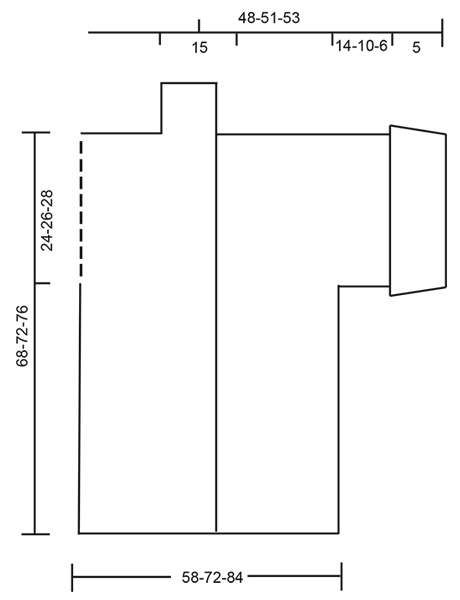
|
|
Have you finished this pattern?Tag your pictures with #dropspattern #thegrovecardigan or submit them to the #dropsfan gallery. Do you need help with this pattern?You'll find 18 tutorial videos, a Comments/Questions area and more by visiting the pattern on garnstudio.com. © 1982-2025 DROPS Design A/S. We reserve all rights. This document, including all its sub-sections, has copyrights. Read more about what you can do with our patterns at the bottom of each pattern on our site. |
|








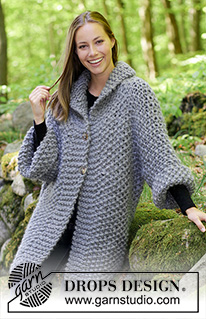



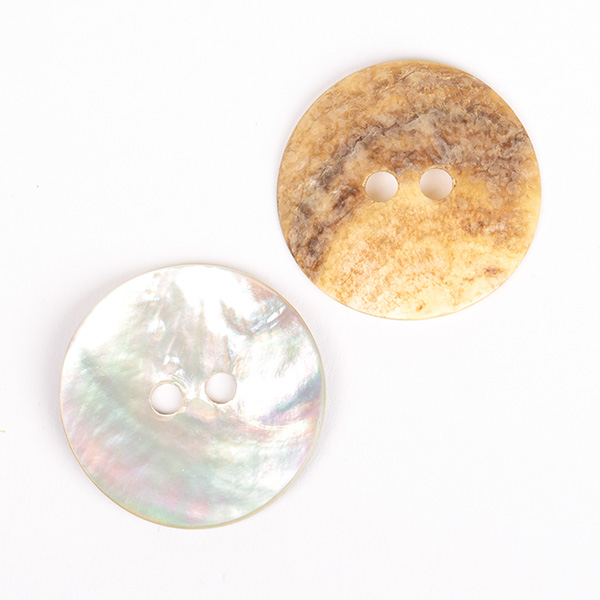

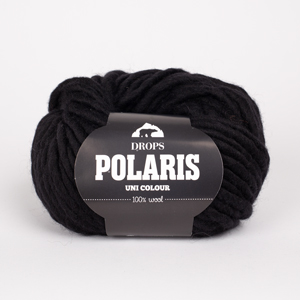
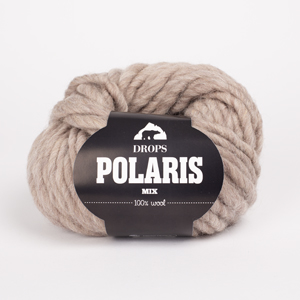







































Post a comment to pattern DROPS 179-25
We would love to hear what you have to say about this pattern!
If you want to leave a question, please make sure you select the correct category in the form below, to speed up the answering process. Required fields are marked *.